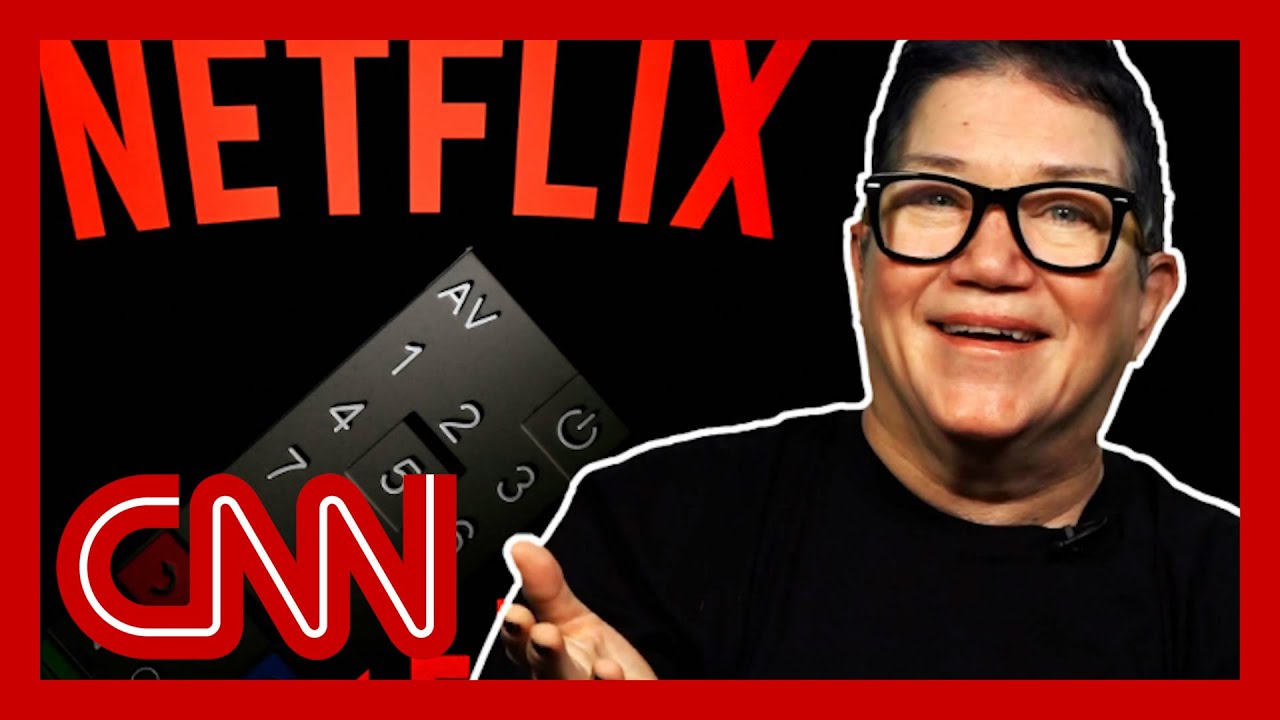Residual Checks - Cents And Sense Of Worth In Hollywood
Beyond Hollywood’s glitz and glamor, residual checks provide a glimpse into the enduring impact of creative work. They serve as a testament to the talents and skills of actors and writers. Discover their dynamic nature and significance and the impact of an ever-evolving landscape of entertainment consumption on them.
Author:Gordon DickersonReviewer:Frazer PughAug 02, 20237.9K Shares221.6K Views

In the ever-evolving landscape of the entertainment industry, where creativity and innovation flourish, a less-discussed yet critical aspect remains steadfastly ingrained: residual checks.
These unassuming yet powerful financial instruments serve as a quiet testament to the work of the talented individuals who breathe life into our screens, stages, and airwaves.
Beyond their monetary value, residual checks embody the enduring impact of artistic endeavors, representing a tangible connection between creators and their audiences.
As we discuss residual checks, we uncover a vital mechanism that upholds the artistic spirit, recognizes the indelible contributions of artists, and symbolizes the perpetuity of artistic expression in our collective culture.

Actress reveals how much she just made from a top Netflix show
Residual (Entertainment Industry)
In the entertainment industry, a “residual check” refers to a payment made to actors, writers, directors, and other creative professionals for the reuse or re-airing of their work.
These payments are typically based on specific agreements outlined in the artists’ contracts or collective bargaining agreements with relevant guilds or unions.
When a film, television show, commercial, or any other form of media is distributed or broadcasted beyond its original release, the creators are entitled to receive additional compensation known as residuals.
Residual checks are particularly common in the television industry, where shows often enjoy reruns and syndication, but they can also apply to:
- movies
- streaming content
- commercials
- other media formats
The calculation of residual payments can vary depending on the type of distribution and the specific terms agreed upon in the contracts.
Typically, residuals are calculated as a percentage of the revenue generated from the secondary use of the work.
For instance, actors might receive a residual payment based on the number of times an episode they appeared in is aired on television or streamed online.
Residual checks are important to ensure that creative professionals continue to benefit financially from their work, even after its initial release.
These payments can be a significant source of income for artists, especially for those whose work remains popular over an extended period.
Also, they could help pay the rent and the utilities when work is far and few in between.
As singer-actress Mandy Moore told USA Today in a July 2023 interview:
“„I’ve had very lean years where I couldn’t get a job and those are precisely the moments when in years past, actors could rely on residuals from their past work to help them get by.- Mandy Moore
Guilds and unions play a crucial role in negotiating and enforcing residual payment terms on behalf of their members.
They work with studios, production companies, and other industry stakeholders to establish fair compensation structures and protect the rights of creative professionals in the ever-evolving landscape of media distribution.

Hollywood Unions And Guilds
There are several guilds and unions in Hollywood that play a significant role in enforcing residual payment terms for film and television industry workers.
Here are some of the key guilds and unions involved in residual checks:
a. Screen Actors Guild - American Federation of Television and Radio Artists (SAG-AFTRA)
SAG-AFTRA is one of the most prominent unions in Hollywood, representing a wide range of media professionals, including:
- actors
- announcers
- broadcasters
- journalists
They negotiate contracts and ensure their members receive appropriate residual payments for film and television projects.
b. Writers Guild of America (WGA)
The WGA represents writers in the entertainment industry, including screenwriters and television writers.
They negotiate with production companies to establish fair compensation terms, including residual checks, for their members.
c. Directors Guild of America (DGA)
The DGA represents film and television directors, assistant directors, and production staff.
They work to secure residuals and other benefits for their members.
d. Producers Guild of America (PGA)
While the PGA represents producers, they also play a role in negotiating and administering contracts that include residual payment terms for various industry professionals.
e. International Alliance of Theatrical Stage Employees (IATSE)
IATSE represents a wide range of technical and craft workers in the entertainment industry, including:
- camera operators
- editors
- grips
They advocate for their members’ rights and work to ensure fair residual checks.
These guilds and unions have collective bargaining agreements with the Alliance of Motion Picture and Television Producers (AMPTP) and other industry organizations.
Through negotiations and contracts, they establish the terms and conditions under which residual checks are paid to their members when their work is reused or redistributed beyond their original release.

Residual Checks For Actors
In the context of actors in Hollywood, residual checks refers to the payments made to male and female actors for the reuse or rerun of their work in films, television shows, commercials, or other media productions.
These payments are part of the compensation agreements signed by the actors.
They are typically based on the terms negotiated in their contracts with the production companies and entertainment industry guilds.
Here are some key points to discuss regarding residual checks for actors in Hollywood:
a. Residual Payment Structure
The specific payment structure varies based on the medium of distribution (e.g., theatrical release, TV broadcast, streaming, DVD sales) and the platform on which the content is shown.
Residual checks may also apply to foreign markets.
b. Collective Bargaining and Guild Agreements
Residual payment rates are often determined through collective bargaining between the actors’ guilds (e.g., SAG-AFTRA) and the AMPTP.
These agreements help establish industry-wide standards and protect actors’ rights.
c. Different Media, Different Rules
Residual payment rates may differ between:
- theatrical releases
- television broadcasts
- cable networks
- video-on-demand services
- streaming platforms
For instance, residual checks for streaming services (e.g., Netflix or Hulu) are relatively new compared to traditional TV and film residuals.
d. Calculation Factors
Various factors are involved in calculating residual payments, including the:
- initial compensation an actor received for their work
- medium of distribution
- number of times the content was shown
- market where it was shown
Rates may also be influenced by the budget of the production and the type of role the actor played, such as:
- lead
- supporting
- background
e. Residual Payment Periods
Residual checks are not paid indefinitely; they are limited to specific periods or cycles.
For example, actors may receive residuals for a certain number of airings or within a defined timeframe (e.g., quarterly or annually) after the initial release.
f. Controversies and Negotiations
Residual payments have been a topic of debate in the entertainment industry.
As new distribution methods emerged (e.g., streaming services), actors’ guilds and production companies have engaged in negotiations to establish fair compensation standards for actors’ work on these platforms.
Back in 2015, USA Today reported that the cast of Friends (1994-2004)- Jennifer Aniston, Courteney Cox, Lisa Kudrow, Matt LeBlanc, Matthew Perry, David Schwimmer - each made 2 percent from the show’s syndication (reruns) revenues.
According to the said report, Warner Bros. profited $1 billion annually for the broadcast syndication of Friends.
It meant a total of $120 million of residual checks for the six actors ($20 million each - the 2 percent of $1 billion).
The table below shows the residual checks for other actors/TV series/movies, according to Backstage:
| TV Series (main cast) & Actors | Residuals |
| “Everybody Loves Raymond” (1996-2005) | $18 million per year |
| “Seinfeld” (1989-1998) | $400 million (“per syndication cycle”) |
| “Will & Grace” (1998-2020) | $250,000 per episode |
| 50 Cent for “The Simpsons” (cameo appearance in 2005) | $16.68 per year (per TheMusic.com.au) |
| Reece Thompson for “Titanic” (1997) | $200 to $300 per year (per Business Insider) |
Residual Checks In The Era Of Streaming Services
Historically, residual checks have been primarily associated with traditional media, such as:
- television broadcasting
- physical media sales (e.g., DVDs and Blu-rays)
However, with the rise of streaming services, the landscape of residual payments has undergone significant changes.
Streaming services, by the way, refer to online platforms that deliver multimedia content directly to users over the internet, such as:
- movies
- TV shows
- music
- videos
In the era of streaming services, the traditional model of residual checks has faced new challenges and adaptations due to the shift in how content is distributed and consumed.
Here are some key aspects to consider:
a. Streaming Services and Licensing Deals
Streaming platforms have become major players in the entertainment industry, and they include:
| Amazon Prime Video | Netflix |
| Disney+ | Paramount+ |
| FuboTV | Starz |
| HBO Max | Tubi |
| Hulu | YouTube and YouTube TV |
These platforms acquire content through licensing deals with studios and production companies.
Residual checks are still factored into these deals, but the terms may differ from the traditional model.
b. Fixed Fees vs. Residuals
Streaming platforms often prefer fixed licensing fees for content, especially for library content or older productions.
This means that the creative professionals involved in these projects might receive upfront payments rather than relying on ongoing residual payments.
c. Original Content and New Deals
With the emphasis on producing original content, streaming services often enter into different agreements with creators.
In some cases, they may offer more generous upfront payments or bonuses instead of the traditional residual structures.
d. Global Reach and Simultaneous Releases
Streaming services provide content to a global audience instantly. This simultaneous release worldwide may impact the calculations of residual checks.
And why is that? Here are two reasons:
- the concept of “foreign markets” diminishes
- residual rates might need to be adjusted accordingly
e. Viewership Data and Compensation
Traditional residual checks were based on:
- viewership estimates
- syndication data
With streaming services, platforms have detailed viewership data that can influence compensation decisions for creative professionals.
f. Union Negotiations
As emphasized earlier, Hollywood guilds and unions play a significant role in determining residual payment structures.
As the entertainment industry adapts to the streaming era, negotiations between guilds, unions, and streaming platforms become essential to secure fair compensation for their members.
g. Impact on Long-Term Income
The shift away from traditional residual checks can have an impact on long-term income for actors and other professionals who relied on residuals as a steady source of revenue.
“„Residuals, that’s how we live.- Whitney Morgan Cox
Cox, whose latest project is the science fiction-drama Aporia (2023), added:
“„There are our initial paychecks, which helps, but then there are our residuals which help us with our groceries and our day-to-day lives.- Whitney Morgan Cox
Some might experience fluctuations in earnings as the industry continues to evolve.
These three factors will continue to shape how residual checks are structured in the years to come:
- negotiations
- contracts
- the ability to adapt to new business models
Overall, the transition to the streaming era has brought both opportunities and challenges for residual payments in Hollywood.
While traditional residual checks may not hold the same weight they once did, new compensation models are emerging.
In addition, creative professionals and industry stakeholders are navigating this changing landscape to ensure fair and sustainable compensation for their work.

How Do Residuals Work For Streaming?
Basically, residual checks tend to be big if we’re talking about those received, as mentioned earlier, from traditional media (e.g., TV broadcast and DVD sales).
Then they get bigger if the movie turns out to be a box office success or if it’s a top-rating TV series.
In the case of streaming services, the success of the show (e.g., high TV ratings) has no effect on the residuals.
Why? It’s because, according to Parade:
| Who? | Basis of Residual Payment |
| traditional media | number of viewership |
| streaming companies | number of subscribers |
As Charles Slocum, the assistant executive director at Writers Guild of America West (WGAW) told Deadline in April 2013:
“„In streaming, the companies have not agreed to pay residuals at the same level as broadcast, or the same reward-for-success as they have traditionally paid in broadcast.- Charles Slocum
Slocum further explained that when it comes to streaming, the “success factor” of the shows won’t affect the residual payments.
On July 15, 2023, actress and Broadway performer Kimiko Glenn shared on TikTok (@itskimiko) the residual payment she received for her role in Netflix’s Orange Is the New Black (2013-2019).
Part of the show’s recurring cast, Glenn’s character, the inmate Brook Soso, was seen from Season 2-5 (with a guest appearance in Season 7 - the last one).
In the said video clip, a Foreign Royalty Statement from SAG-AFTRA printed on a pink paper shows that Glenn’s total residual payment for the said TV series was $27.30.
Yes. That’s what she earned (foreign residuals) in a span of more than 10 years since the release of the series, according to Fortune.
For his work in the Will Smith-starrer Bright (2017), a Netflix production, Chris Browning told Fortune that if the DVD sales would be the basis, he would receive a residual check for $25,000.
However, Netflix only gave Browning a residual payment of $271.
Parade reported that when Hulu streamed NBC’s This Is Us (2016), Mandy Moore, one of the lead actors, received residual checks lower than $1.
There’s one for 81 cents; another one for a penny!

Sean Gunn says Netflix "trying to screw people over," as SAG-AFTRA strike continues
People Also Ask
Do All Actors Get Residual Checks?
Based on an article published by Parade in July 2023, these people in Hollywood don’t receive residual checks:
- background actors (the extras)
- actors and writers that are not union members
What Is The Difference Between A Residual And A Royalty?
According to Rebecca Green, the director of Customer Success at Los Angeles-based payments company Exactuals, between residual checks and royalties, the former is “mandated by unions.”
Royalties require different negotiation or agreement terms because they are not originally part of the negotiation/agreement terms indicated by unions when it comes to residuals.
How Are Royalties Calculated?
Per Flowhaven, a Finnish licensing suite, the base formula to calculate royalties is this: “royalty revenue = sales x [multiplied to] royalty percentage.”
Final Thoughts
In this thrilling realm of lights, camera, and action, residual checks play a crucial role.
They weave a fascinating tale of recurring rewards for the talented individuals who bring our favorite movies, television shows, and commercials to life.
One of the importance of assuring the fair processing of residual checks is that they represent a continuous acknowledgment of the hard work of artists, performers, and writers.

Gordon Dickerson
Author

Frazer Pugh
Reviewer
Latest Articles
Popular Articles
